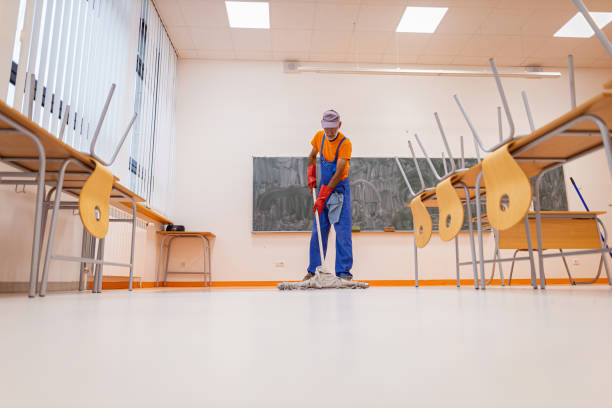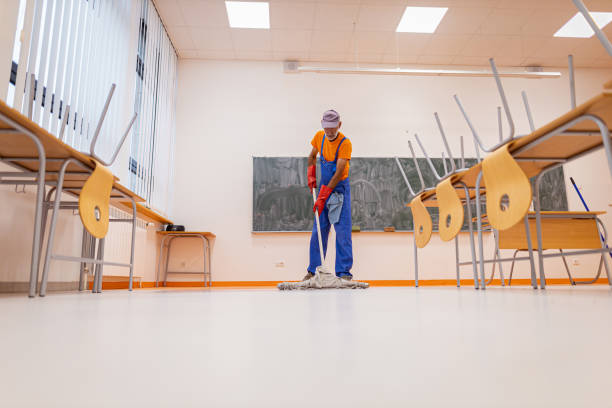The Importance School cleaning: Creating a Healthy Learning Environment
Introduction:
A clean and well-maintained school environment plays a vital role in creating a healthy and conducive learning space for students. It goes beyond just aesthetics – cleanliness directly impacts the well-being, productivity, and academic performance of students. In this blog post, we will delve into the significance of clean schools and explore how they contribute to a positive learning experience for students.
Promoting Health and Hygiene
- The link between cleanliness and student health
- Reducing the spread of germs and illnesses in schools
- The role of cleanliness in preventing absenteeism
Enhancing Concentration and Focus
- The impact of a clean and organized classroom on student focus
- Minimizing distractions through a clutter-free environment
- Creating an atmosphere conducive to learning and concentration
Improving Indoor Air Quality
- Regular School cleaning and maintenance to prevent indoor air pollution
- Promoting respiratory health and reducing allergies among students
Preventing the Spread of Infections
- The role of proper cleaning and disinfection in preventing the spread of infections
- Targeting high-touch surfaces and areas prone to contamination
- Collaborating with healthcare professionals for effective infection control strategies
Fostering a Sense of Pride and Ownership
- The psychological impact of clean and well-maintained spaces
- Instilling a sense of pride and responsibility in students
- Promoting positive attitudes towards cleanliness and personal hygiene
Ensuring Safety and Accident Prevention
- Regular cleaning and maintenance of floors, corridors, and outdoor areas
- Minimizing hazards and potential accidents through cleanliness
- Creating a safe environment for students and staff
The Role of Proper Waste Management
- Promoting proper waste disposal and recycling practices
- Educating students on the importance of waste reduction and sustainability
- Maintaining clean and hygienic surroundings through effective waste management
Collaborative Efforts for Clean Schools
- Involving students, teachers, and staff in cleanliness initiatives
- Organizing cleaning campaigns and educational programs
- Encouraging a culture of cleanliness and responsibility within the school community
Regular Cleaning and Maintenance Practices
- Developing a comprehensive cleaning schedule for classrooms and common areas
- Using safe and effective cleaning products and equipment
- Ensuring the availability of necessary cleaning supplies
Engaging Parents and Guardians
- Communicating the importance of cleanliness to parents and guardians
- Encouraging their involvement in school cleanliness initiatives
- Collaborating to maintain a clean and healthy learning environment
Daily Cleaning Procedures for Clean and Sanitary Classrooms
In the world of education, cleanliness plays a crucial role in creating a healthy and conducive learning environment. Effective daily cleaning procedures in schools ensure that classrooms remain clean, sanitized, and safe for both students and teachers. Let’s explore the essential steps involved in maintaining clean and sanitary classrooms, promoting a positive educational experience for all.
Preparing the Cleaning Cart:
- Before embarking on the cleaning journey, the first step is to gather all the necessary cleaning supplies and tools. A well-equipped cleaning cart should include disinfectant sprays, microfiber cloths, mops, brooms, dustpans, gloves, and trash bags. This ensures that the cleaning process is efficient and organized.
Dusting and Cobweb Removal:
- Start the school cleaning routine by removing dust and cobwebs from all surfaces, including desks, chairs, shelves, and windowsills. Using microfiber cloths or dusters helps capture the dust effectively and minimizes the spread of allergens. Pay attention to hard-to-reach areas, ensuring a thorough clean throughout the classroom.
Wiping Down Surfaces:
- Next, it’s time to wipe down surfaces with appropriate disinfectant solutions. Desks, chairs, countertops, and other frequently touched areas should be thoroughly cleaned to eliminate germs and prevent the spread of illnesses. Remember to follow manufacturer instructions for proper dilution and application of disinfectants.
Floor Cleaning:
- Maintaining clean floors is essential for a hygienic classroom environment. Sweep or vacuum the floors to remove dust, dirt, and debris. Pay extra attention to corners and edges. Depending on the type of flooring, mop with a suitable disinfectant solution to ensure a thorough clean. Regular floor maintenance also helps extend the lifespan of the flooring material.
Emptying and Disinfecting Trash Bins:
- Proper waste management is crucial in schools. Empty and sanitize trash bins daily to prevent unpleasant odors and the accumulation of bacteria. Use appropriate gloves and disinfectant sprays when handling waste materials. Encourage students to dispose of trash properly, promoting cleanliness and environmental responsibility.
Sanitizing Restrooms:
- Maintaining clean and sanitized restrooms is vital for student health and well-being. Clean and disinfect toilet seats, sinks, faucets, and other high-touch surfaces. Restock hand soap, paper towels, and toilet paper regularly. Regular inspections and proactive maintenance ensure a hygienic restroom environment throughout the school day.
Cleaning Whiteboards and Projectors:
- Interactive whiteboards and projectors are common fixtures in modern classrooms. Clean these surfaces regularly to remove markers, smudges, and dust. Use appropriate school cleaning solutions and soft cloths to avoid damaging the screens. A clean and clear teaching space enhances the learning experience for both students and teachers.
Promoting Personal Hygiene:
- In addition to daily school cleaning procedures, fostering personal hygiene practices among students is crucial. Educate students about proper handwashing techniques, covering their mouths when coughing or sneezing, and maintaining cleanliness in their personal spaces. Reinforce these habits to minimize the spread of germs and promote a healthy school environment.
Conclusion:
Daily school cleaning procedures are vital for maintaining clean, sanitary classrooms in schools. By following these essential steps, teachers and janitorial staff can create a conducive learning environment that promotes student well-being and academic success. Clean classrooms not only enhance hygiene but also foster a positive atmosphere that inspires students to thrive. Let’s prioritize cleanliness in schools and provide students with the best possible environment for growth and learning.
Clean schools are essential for providing students with a safe, healthy, and productive learning environment. By promoting health and hygiene, enhancing concentration and focus, improving indoor air quality, preventing the spread of infections, fostering a sense of pride and ownership, ensuring safety, and encouraging collaborative efforts, schools can create an environment that supports the holistic development of students. Let us recognize the importance of clean school and work together to provide an optimal learning experience for our students.






